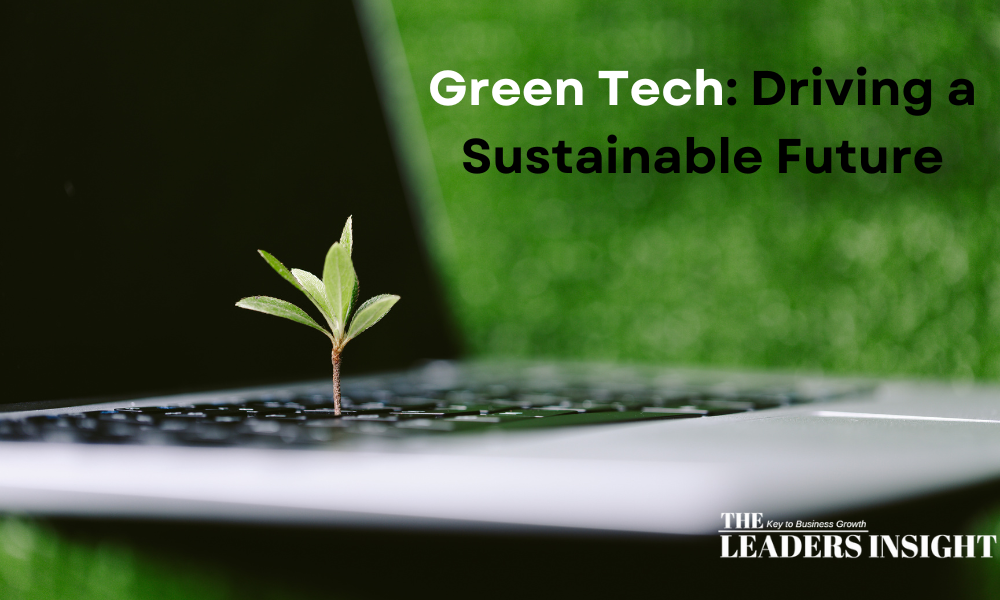Current Trends in Green Tech: Driving a Sustainable Future

1. Renewable Energy Innovations
The transition to renewable energy sources, such as solar, wind, and hydropower, is crucial to reducing greenhouse gas emissions. Solar power has become more affordable and accessible, and wind farms are now among the world’s leading sources of clean energy. Companies like Tesla and Enphase Energy continue to push boundaries with efficient, cost-effective solar energy solutions, while offshore wind farms are rapidly expanding in Europe and the U.S.
Explore Energy.gov’s Solar Energy Technologies Office for more on solar advancements, and read about the latest developments in offshore wind at the World Economic Forum.
2. Electric Vehicles (EVs) and Charging Infrastructure
Electric vehicles (EVs) are at the forefront of the green tech movement, providing an eco-friendly alternative to traditional fuel-powered cars. Governments worldwide are incentivizing EV adoption, with many countries planning to phase out gas and diesel vehicles in the next decade. Companies like Tesla, Rivian, and Lucid Motors are leading the charge, while Volkswagen and other legacy automakers are heavily investing in EV models. Additionally, charging infrastructure is growing, with major players like ChargePoint and Electrify America setting up fast-charging stations nationwide.
Visit EVAdoption.com for data on EV growth and Electrify America to learn about advancements in EV charging networks.
3. Sustainable Agriculture and Food Technology
Green technology is transforming agriculture with vertical farming, precision agriculture, and lab-grown meat. Vertical farms, such as those operated by AeroFarms and Plenty, use hydroponics and LED lighting to grow crops indoors, reducing water and land usage. Precision agriculture involves the use of IoT sensors and drones to monitor soil health and crop growth, increasing yields and reducing waste. Lab-grown meat is gaining traction, with companies like Beyond Meat and Impossible Foods making sustainable meat alternatives more accessible.
Check out AgFunderNews for updates on agri-tech innovations, and Impossible Foods for the latest on plant-based protein solutions.
4. Carbon Capture and Storage (CCS)
Carbon capture and storage (CCS) is an emerging technology aimed at reducing atmospheric CO₂ levels. This technology captures carbon emissions from industrial processes and stores them underground, preventing them from entering the atmosphere. Companies like Climeworks and Carbon Clean are leading in carbon capture solutions, while Chevron and Shell are investing in CCS projects to offset their emissions. Several countries are also establishing policies to support CCS projects as part of their climate action plans.
Learn more about CCS at Global CCS Institute, and read about Chevron’s projects in Chevron’s Climate Strategy.
5. Waste Reduction and Circular Economy Initiatives
Green tech is advancing waste reduction through circular economy models and innovative recycling technologies. In a circular economy, products are designed to be reused, repaired, or recycled, minimizing waste and resource consumption. Tech companies like Dell and Apple are implementing recycling programs and using recycled materials in their products. Additionally, biodegradable materials and sustainable packaging solutions are on the rise, reducing the environmental impact of single-use plastics.
For more on circular economy strategies, check out Ellen MacArthur Foundation and GreenBiz’s insights on companies embracing sustainable practices.
6. Sustainable Building and Smart Cities
Green tech in construction and urban planning is enhancing energy efficiency and reducing carbon footprints. Sustainable buildings use energy-efficient materials, renewable energy sources, and smart technology for heating, cooling, and lighting. Cities around the world are becoming smarter by integrating IoT and AI to optimize resources, cut down on waste, and improve urban living standards. LEED-certified buildings, which meet strict environmental standards, are becoming more common as developers adopt sustainable design.
Explore the U.S. Green Building Council’s LEED certification to learn more about sustainable building standards and Smart Cities Dive for updates on green city developments.
7. Water Conservation and Desalination Technology
Water scarcity is a pressing issue in many parts of the world, and green tech solutions like desalination and wastewater recycling are providing much-needed relief. Desalination, which converts seawater into drinking water, has seen advancements in energy efficiency, with companies like IDE Technologies and Veolia leading in this area. Smart water management systems are also being used in agriculture and urban settings to conserve water.
Read more about water-saving technologies at Global Water Intelligence and World Resources Institute for insights on water conservation strategies.
